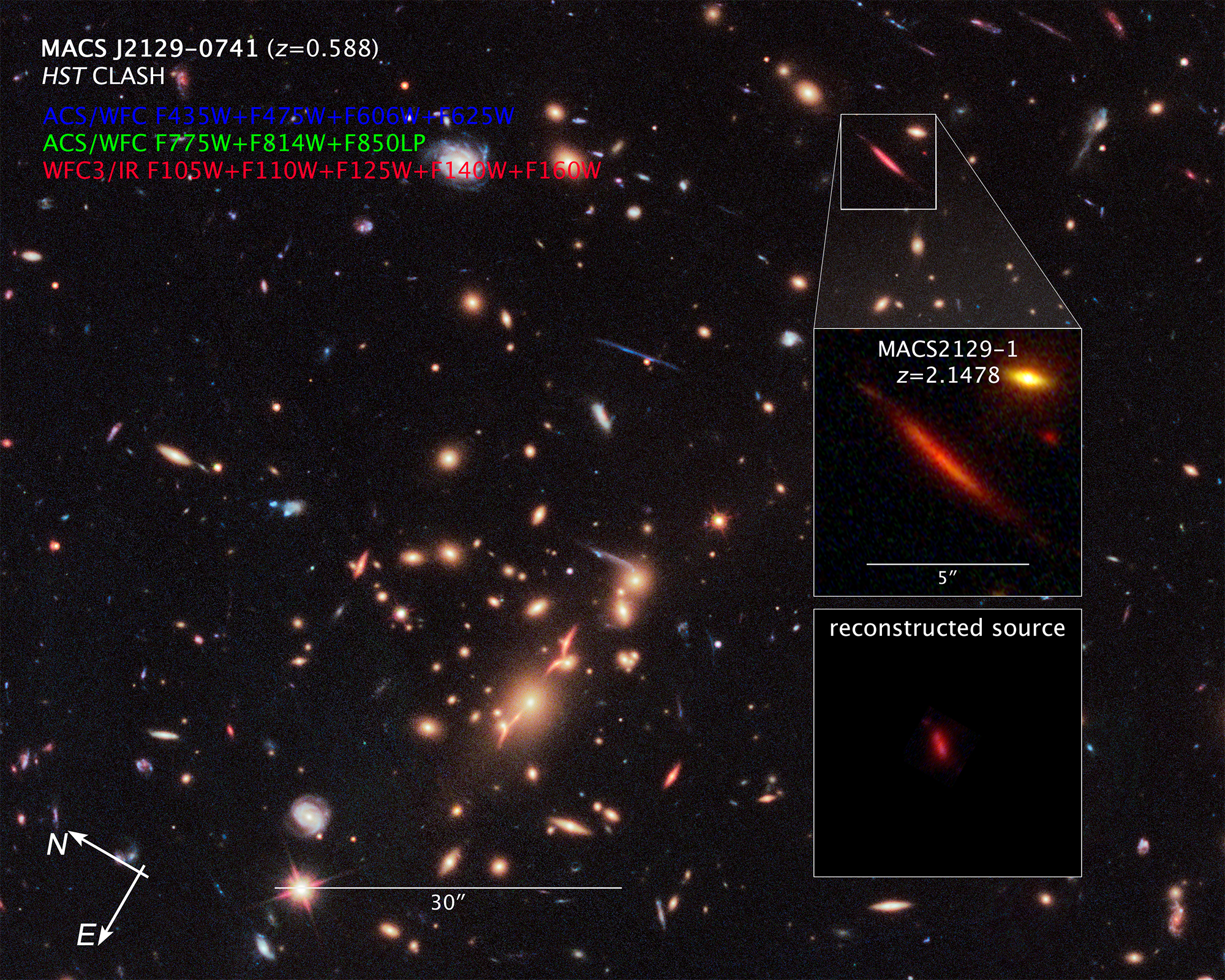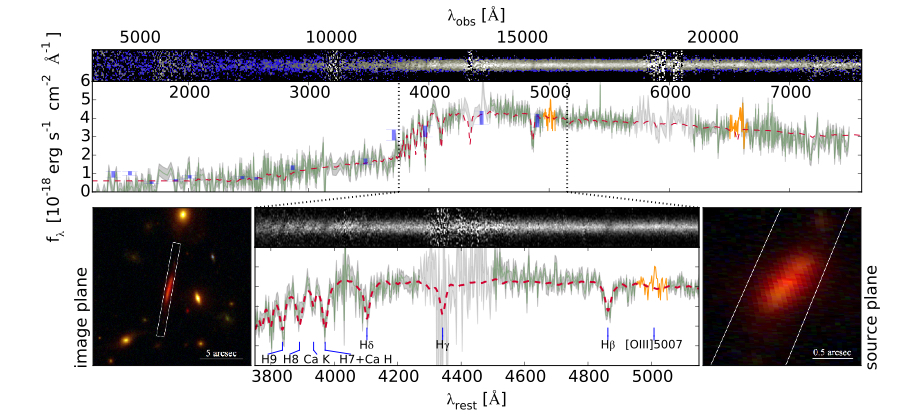A rapidly rotating disk "dead" galaxy in the young Universe
MACS2129-1 is a massive galaxy in the early Universe, at a redshift of 2.15, that is no longer forming stars but which exhibits surprisingly rapid rotation in its stellar disc, like our Milky Way. This unexpected dead and rotating massive galaxy is the subject of a detailed study by an international group of researchers led by Sune Toft (Niels Bohr Institute, Copenhagen) and including Anna Gallazzi and Stefano Zibetti (INAF-Arcetri Astrophysical Observatory).
This is the first time that a rapidly rotating disc has been observed in a primordial massive galaxy that is no longer forming new stars: MAC2129-1 poses into question theories according to which star formation in massive galaxies is quenched as a consequence of catastrophic events that destroy the ordered stellar motion in their disc and transform them into spheroidal systems. In the local Universe galaxies that form stars have a disc-like morphology and their stars rotate on approximately circular orbits, like the Milky Way, while passive galaxies that have stopped forming stars have spheroidal morphologies and chaotic stellar motions. This is not the case of the primordial massive galaxy MACS2129-1.
It has been possible to uncover the nature of MACS2129-1 thanks to observations gathered with the spectrograph X-Shooter on VLT and with the Hubble Space Telescope. These detailed observations were facilitated by the fact that this galaxy happens to lie behind a galaxy cluster closer to us which acts as a gravitational lens, amplifying the signal and stretching the image of MACS2129-1, allowing to study the distribution and kinematics of the stars in the galaxy (see Figure 1).
 |
Figure 1: HST color-composite image of the cluster MACS2129 which acts as a gravitational lens, magnifying and distorting the distant background galaxy MACS2129-1, shown in the top box. The middle box is a blown-up view of the lensed galaxy. The bottom box shows the reconstructed source image, based on lensing modelling, i.e. how the galaxy would look like if the foreground cluster were not present. Credits: NASA, ESA and S. Toft, M. Postman and the CLASH team. |
While the images obtained with the Hubble Space Telescope were instrumental to reconstruct the complex gravitational lens through which we observe MACS2129-1 and correct for its distortions, the spectroscopic data from X-Shooter on VLT (see Figure 2) were crucial to determine the nature of this galaxy as a rapidly rotating disc. A detailed analysis of the spatially-resolved spectroscopic data allowed, on one hand, to determine that this galaxy has stopped forming stars since already one billion years at the time of observations and that it is a mature galaxy in terms of mass formed and degree of chemical enrichment, and, on the other hand, to reveal that the stars in MACS2129-1 are rotating around its centre at a speed of more than 500 km/s, twice as fast as those in the Milky Way. This is incompatible with a catastrophic event, such as a galaxy merger, is responsible of the suppression of star formation.
 |
| Figure 2: Rest-frame UV-optical XShooter spectrum of MACS2129-1. In the upper panel the whole spectrum is plotted as a function of observed wavelength; in the lower panel the spectrum is plotted as a function of rest-frame wavelength and zoomed onto the most important absorption features used to analyse the stellar populations and their kinematics. Important emission lines are highlighted in orange. The insets show color-composite HST images as observed (left) and on the reconstructed source plane according to the lens model (right). Taken from Toft et al, 2017, Nature. |
Further observations on more galaxies at early cosmic epochs are required in order to understand how typical systems like MACS2129-1 are in the early Universe and thus put constraints on the mechanisms that quench star formation and lead early galaxies to evolve into their present-day descendants. The James Webb Telescope and the Extremely Large Telescope will have a decisive role in this search.
The results of this study are published in the June 22 issue of the journal Nature, “A massive, dead disk galaxy in the early Universe”, Toft S. et al.
Edited by Anna Gallazzi, 22 June 2017



